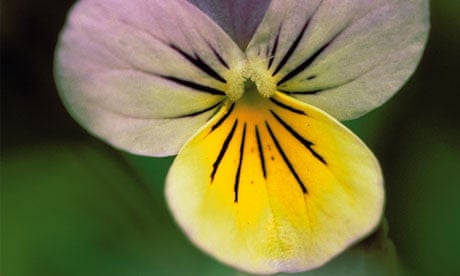I ate a lot of flowers last year. Not terribly filling, I'll admit, but they proved to be the most magical of ingredients, turning a green salad into a flowery mead and a scoop of ice-cream into a fairy castle. They earned their keep pre‑harvest, too: they looked so at home on the allotment, nestling brightly and dependably among the veg, and providing something to lift the heart even when skies were grey and produce was lacking.
They are also at the very top of the "you can't buy this" list, marking out your dishes as homegrown far more tactfully than an "I grew all this myself!" announcement as guests take their seats. Delicate and ephemeral, they would be trashed by commercial harvesting, and look tired and past it a few hours after cutting. You have to grow them yourself, and thankfully it's easy. Here are five favourites.
Nasturtiums
I would grow nasturtiums for their leaves alone – perfect circles of bright, fresh green in ever-descending size, draping elegantly along flower beds – but their flowers are special, in jewel-bright oranges and deep reds. Both leaves and flowers have a strong, peppery flavour. They are tender annuals, so sow them into modules under glass a couple of weeks before the last frost. Pot on into small pots a few weeks after germination and plant out somewhere sunny once all danger of frost has passed. Try 'Empress of India' (ruby red flowers against darkest green leaves), 'Alaska' (bright flowers against white- and cream-splashed leaves) or 'Milkmaid' (pale primrose flowers).
After picking, float them, faces upturned, in a bowl of water until ready to use. This keeps them fresh and even plumps them up a little. Pick flowers young and scatter them on salads. The leaves can be ground with parmesan and walnuts to make a peppery pesto.
Viola Tricolor
Commonly known as heartsease for its medicinal properties, Viola tricolor has long been used as an edible flower, sprinkled on salads or desserts. It makes a dainty plant, with pretty little violet- and yellow-faced miniature pansy flowers. The flavour is delicate and perfumed.
Sow under cover in early to mid-spring, then plant out once the weather has started to warm, though protect them from slugs.
Pick the flowers when they have just opened and leave them in cold water to swell up slightly before scattering on to salads. To crystallise flowers, use a fine brush to paint them with egg white and scatter with caster sugar. Leave to dry for two hours. Use within a week, on top of cakes or puddings.
Courgette flowers
Courgette flowers have a delicate courgette taste and are wonderful lightly fried in butter, or stuffed as tempuras. Females have a small bulge behind the flower that will turn into a courgette. Males have a straight stem and will never be courgettes, so pick with abandon. Track down 'Bianca', a variety that produces unspectacular courgettes but lots of flowers. Harvest early in the day, when flowers are young and fresh. Wash carefully and remove the central stamens.
Borage
Borage produces star-shaped, sapphire-blue flowers with a fresh, cucumber taste, perfect for adding to salads and summery drinks but just as happy crystallised or sprinkled on to sweet things. It is a hardy annual. Sow under cover in early spring and plant out in early summer in a sunny spot with well-drained soil. After the first year, borage should self-sow freely.
Scatter the young flowers on salads or cold soups (they are a particularly good addition to cucumber soups) and into summery cocktails such as Pimm's. To freeze, half fill an ice-cube tray with water, drop a flower into each cube, and freeze. Once this has frozen, top up and freeze again.
Marigolds
Pot marigolds, or calendula, produce happy orange flowers. The petals have a peppery taste and look beautiful sprinkled over food. This is a hardy annual – sow where it is to flower, in early to mid-spring. You will get quicker growth and stronger, earlier-flowering plants if you start them off under cover and plant outdoors once the weather has started to warm. Plant into full sun, in rich but well-drained soil. Use flowers straight away as a garnish on soups and salads. Grind with a little olive oil to create a "poor man's saffron" for colouring dishes.

Comments (…)
Sign in or create your Guardian account to join the discussion